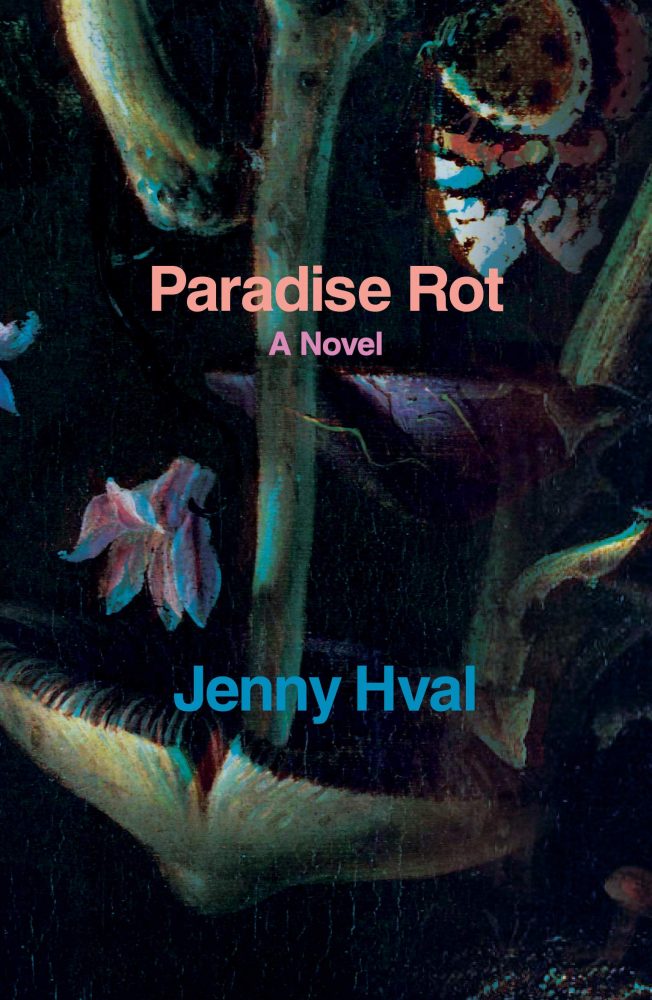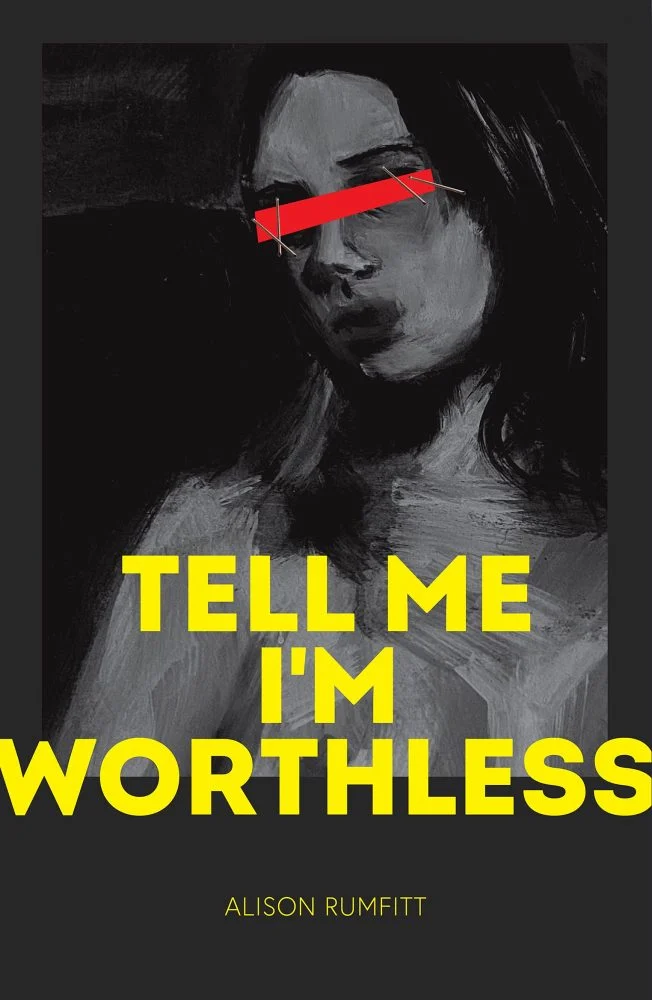This is the era of the weird woman! Sad girls and weird girls, rise up—we’re taking over the world of good fiction. What’s a weird girl, you ask? Weird woman fiction is literature that’s written by women, usually featuring unlikeable protagonists with odd behaviours. It may have a horror or thriller tint, or it may not. It make make readers feel uneasy; it’s transgressive and breaks away from the status quo of women being nice and polite.

Weird girl books are all about upsetting the norm. They’re punk tales of women being gross, strange, dangerous, or even just allowing themselves to be sad, angry, unpleasant, and unlikeable. These subversive books are all about painting women in darker, stranger colours, and we love to see it!
Out by Natsuo Kirino
Translated from the Japanese by Stephen Snyder

One of the progenitors of weird girl fiction, Out is a thriller that follows four women who work night shifts at a sandwich factory. The men in their lives are cruel and hateful, and eventually one of them snaps and murders her husband by choking him to death with his own belt while their kids are in the other room.
With the help of the other three women, she cuts up and hides his body, and they all agree to a vow of silent solidarity. But this vow might not last, and if it doesn’t there will be police and even worse sniffing around, searching for the truth. This is a very bleak novel about downtrodden women doing dark things in order to forge a path too freedom, liberation, or even just a little good old fashioned revenge.
Lapvona by Ottessa Moshfegh

Ottessa Moshfegh is perhaps the quintessential weird woman of fiction right now. Her books are off-kilter and upsetting, leaving readers with a sense of unease. None moreso than Lapvona, a gothic medieval tale of serfdom, subservience, witchcraft, and death.
The titular Lapvona is an isolated village lorded over by a rich man who lives on a hill above the peasantry. One of those peasants is a disfigured boy with a cruel father who lies to him. We learn about these men, as well as the son of the lord, over the course of a year. That year is beset by drought, disease, and day-to-day struggles.
There is also a dark magical element to Lapvona. The village witch was wet-nurse to many of the villagers, and she replaces her eyes with those of a horse in order to regain her sight. Beyond this, Lapvona is a novel with clear socialist undertones from an author who seems to be very cynical towards society, and the book is amazing as a result.
Boulder by Eva Baltasar
Translated from the Catalan by Julia Sanchez

Boulder is a Catalan novel about the complexities of love and relationships. We begin on a ship off the coast of Chile, where the titular Boulder meets a woman with whom she quickly falls in love. When Samsa gets a job in Reykjavik, Boulder follows her and their relationship becomes strained. This is mostly because Samsa wants to have a child and Boulder doesn’t.
What begins as a hedonistic relationship defined by lust and adventure soon becomes a recognisable tale of the struggles of love when one person wants what the other doesn’t. It’s an ugly and uneasy work of sapphic literary fiction. There is little romance in here; instead, it reminds us of the often uneasy and messy nature of relationships.
Boy Parts by Eliza Clark

An icon of weird girl fiction, Eliza Clark’s Boy Parts is a work of literary fiction about a photographer in her twenties who lives in Newcastle and is defined by her own self-destructive behaviour. Irina is building a portfolio of works which all depict boys and men in explicit poses and doing illicit acts. She invited them to her studio, sometimes seduces them, and takes photos for her collection.
Soon, she is offered the opportunity to display her work at a museum in London, which she accepts. In the meantime, she falls into a potential relationship with an actual good guy, goes to parties with friends, and flashes back to a fractured and strange past that we gently piece together over time.
Irina isn’t like other girls; and she is also on the fast track to burning out. Memories are creeping in, and she is shutting everyone out. We watch her like a car crash and we wonder where she will land.
Read More: Essential Fantasy Books by Women
Paradise Rot by Jenny Hval
Translated from the Norwegian by Marjam Idriss

Written by Norwegian singer-songwriter Jenny Hval, Paradise Rot follows a naive young woman who has moved to a dank and wet nameless town for university. She moves into a converted brewery—open-plan but divided poorly by cheap and flimsy walls, like the cubicles in an office. There is an unsettling lack of privacy here between pour protagonist and her new roommate.
What makes this so wonderfully weird and gothic is our protagonist’s obsession with the body—with bodily fluids and the mechanics of our fleshy, wet parts. While it isn’t body horror, it is a novel that makes a horror out of the body, reminding us that we are gooey sacks that take in and expel so much mush and wetness, and everything about us dies and rots. This is a claustrophobic and strange tale.
Tell Me I’m Worthless by Alison Rumfitt

A straight-up work of political horror, Tell Me I’m Worthless has become a cult classic of the genre. Rumfitt’s novel tells the story of two women who were once friends at university. As adults, however, one is transgender and the other is a TERF. We know they fell out after spending a night at a haunted house (called Albion—get it?). Something awful happened there, and we will eventually find out what, exactly, that was.
With a real Shirley Jackson edge to it, Tell Me I’m Worthless is a novel about the fascistic attitudes of modern-day Britain to scapegoat transgender people. It explores the “values” of Britain and twists them into something that better resembles what the country really is at its core. A wonderfully subversive and unsettling haunted house horror novel.
Earthlings by Sayaka Murata
Translated from the Japanese by Ginny Tapley Takemori

Japanese author Sayaka Murata has become a legend of weird fiction in recent years, and her novel Earthlings upsets as many people as it impresses. It tells the story of a young woman named Natsuki who believes that she is, in fact, an alien.
As a girl, she spent her summers in a mountaintop holiday home with her extended family. She and her cousin Yuu had an unhealthy and taboo relationship at a very young age, and that is only the tip of Natsuki’s iceberg.
As an adult, she still believes that she is an alien, but she has found a way to survive in ordinary human society by entering into an asexual marriage with a man, though she gradually teaches him about how she sees the world: as a factory churning out well-behaved minions for patriarchy and capitalism to suck dry. Natsuki wants to escape this factory, and her methods for doing so are deeply unsettling.
The Pisces by Melissa Broder

Like Ottessa Moshfegh, Melissa Broder is a queen of weird woman fiction, and The Pisces is her masterpiece: a darkly funny tale of mental illness, seduction, unhealthy relationships, and dysfunctional people. Protagonist Lucy is invited to look after her sister’s dog and apartment in Venice, LA. There, she goes on a few bad dates with awful men and eventually falls into a relationship with an actual honest-to-goodness merman.
She goes to group therapy sessions, continues to fall deeper into self-destruction via toxic Tinder dates, and develops a deep obsession with her merman, all the while gradually ignoring her sister’s dog, her responsibilities, and her life. She is a broken, awful woman, and we become addicted to following her decline into depravity and unhinged behaviour.
Cuckoo by Gretchen Felker-Martin

Gretchen Felker-Martin is known for writing the most visceral, uncensored, and frankly depraved scenes of horror in the genre’s history. Her novel Cuckoo plays out like Stephen King’s IT meets Invasion of the Body Snatchers at a conversion camp for gay and trans kids in the ’90s. These kids have been abducted and driven out to the desert to learn “correct” values. There, they will come up against an eldritch horror that threatens their lives.
This group of kids features lesbian, gay, bisexual, and trans boys and girls, and we gradually learn about their individual pasts, watch them bond together, and get some kind of idea about the monstrous thing that lives out in the desert, hunts them, and wears their skin. These kids are being hollowed-out, but they’re also resilient and tougher than they look. But the threat is monstrous and deadly.
Bunny by Mona Awad

Bunny is part of the popular dark academia genre, but it stands out by being a strange, satirical, and cynical novel about college life and the cliquey relationships between young women. This modern classic follows Samantha, a masters student of Creative Writing, and she’s the only girl on the course who isn’t part of an exclusionary in-group of vapid girls who all call each other Bunny.
Samantha is a punk outlier until she isn’t. She gets invited into the group via a letter to one of their parties. At this party, the Bunnies play with dark magic and sacrifice rabbits, which conjures up a hot but simple-headed guy who suddenly appears at their door. From here, Samantha falls into a world of off-kilter strangeness. Feverish and occult, it is an addictive tale of weird women being weird.



